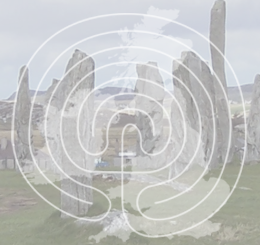The Øyestad (Öiestad) Horn
The following tale from Norway was published in Benjamin Thorpe’s ‘Northern Mythology: Comprising the Principal Popular Traditions and Superstitions of Scandinavia, North Germany, and the Netherlands’ (1851) ‘Near the river Nid in Nedenæs there is a mansion called Neersteen, in which there once dwelt a man named Siur, who was both powerful and rich; for besides Neersteen he owned six other mansions, and a considerable salmon fishery in the Nid; but what was more than all these, he had a daughter, who was the fairest maid of all the surrounding neighbourhood. She was courted by a Westland man named Ring, but the wealthy Siur rejected him for a son-in-law, although his daughter was fondly attached to him.
The lover, however, was not disheartened, so while the father one St. John’s Day was at matins in Öiestad Church, Ring came to the mansion and found his lass, although her father had taken the precaution of locking her up in one of the presses — which, according to the custom of the time, were made at the foot of the bed — a corner of her apron having protruded and betrayed her. They now fled, and Siur, the instant he was apprized of their elopement, mounted his horse and went in pursuit of them.
On the way he was stopped by a troll, who came out of a mount, and bade him welcome, at the same time presenting to him a full drinking horn. Instead of emptying it, he cast its contents behind him, but some drops that fell on the horse’s loins instantly singed the hair off. Siur, who had from the first suspected mischief, put spurs to his horse, and galloped away with the horn in his hand and the troll whining after him.
He was now in a most serious dilemma, from which he was unexpectedly rescued by another troll, who was on terms of hostility with the former one, who called to him when he had just reached a large field: “Ride through the rye and not through the wheat.”
Following this counsel he got the start of his pursuer, who could not proceed so rapidly through the tall rye. The danger was not, however, completely over until he came near the mansion of Bringsvær, when the cock crew and the troll vanished. Siur now continued his pursuit without further delays, and overtook the fugitives on a hill where they had stopped to take a few moments rest. When the men got sight of each other, they immediately drew their knives, and a contest ensued, the result of which was, that Siur stabbed Ring in the belly, who instantly gave up the ghost.
In expiation of this homicide, Siur was compelled to make heavy compensation. The horn, which he kept, was preserved in the family down to our times. Of the daughter’s fate tradition makes no mention.
The (or rather a) horn, which had long been an heirloom in Siur’s family, has lately been presented by Shipmaster Berge to the public library and museum of Arendal School, where it now is. It is very handsome, and has on its three silver-gilt rings the following inscription, in monkish characters: potum servorum benedic deus alme [tuorum reliqvam unus benede le un]? caspar, melchior, baltazar.
A similar occurrence to the above took place many years ago near Hahauger in Hallingdal, where one Christmas Eve a subterranean woman presented drink in a horn to a man named Gudbrand Goelberg, which he threw over his shoulder and rode off with the horn; but down to the ninth generation, his posterity, as a penalty, were afflicted with some bodily blemish or defect, as the troll had threatened. This horn, which was long preserved at Halsteensgaard in Aal, contained nearly three quarts, and was encircled by a strong gilt copper ring about three inches broad, on which, in monkish characters, stood melchior, baltazar, caspar. In the middle was a small, gilt copper plate, in which an oval crystal was set.’




Recent Comments